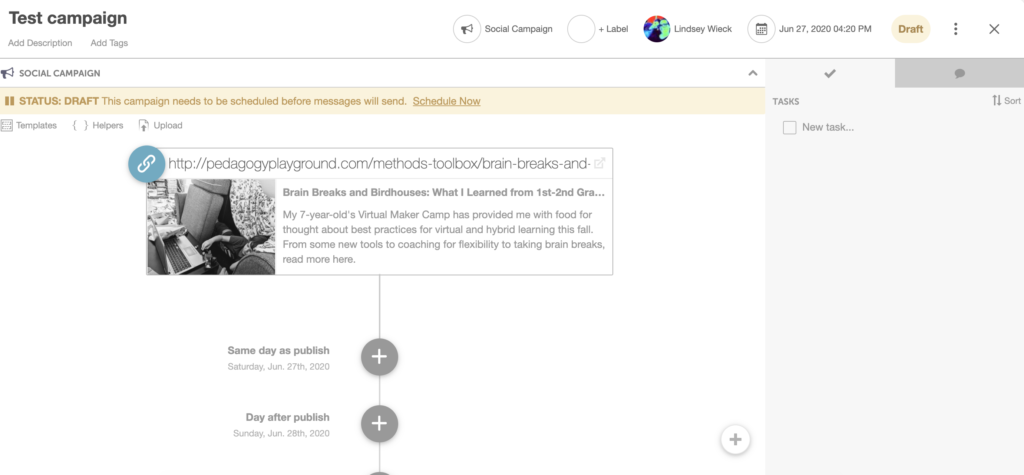I always thought that successful social media managers were GLUED to their screens, but I committed to taking some time this summer to create a better social media strategy for our Public History program, and realized this is not necessarily true! I signed up for Kim Jimenez’s Content Calendar System course and realized how I could start recycling some content more efficiently and how tools like Coschedule could help me do that.
Coschedule provides a blog and social media driven tool for planning and releasing content to the world. I signed up for a trial, and, in an hour, I was able to create a week’s worth of content to distribute to our facebook, instagram, and twitter accounts, and, because it’s so easy, I even set up a linkedin page for our program. Once I get the hang of this, I’ll be able to create a month’s worth of content in a few hours.

I love the visual display of the calendar — it pulls up my planned content for the week. I also have a grad student working to share current events posts on twitter and Facebook, and Coschedule even pulls in these posts after they’re shared directly through those platforms.
A few features I love:
- I can let it choose the best times of the day to post based on analytics, which also means that it distributes the posts throughout the day across the different social media platforms, so they don’t all blast out at once.
- Quite frequently, I use my email inbox as a holding platform for potential social media posts, but now I can schedule a post for the future and archive that email.
- We also could make better use of recurrent posts about the programs that we offer. Coschedule allows me to set up this content recycling process which takes one more thing off my mental load!
- I can create one social media cost for four different platforms. After saving it, I can go in and tweak it for each platform – shortening it for twitter, adding tags into different platforms for different entities discussed in the post, etc.
- Everything is drag-and-droppable like a calendar or Trello board, so you can move posts between days or if you need to reschedule, you can drag them over to an ideas board.
One great feature that I haven’t experimented with yet is the Social Media campaign feature. This allows you to easily take one piece of content and generate multiple social media posts using that same content. This would work great for events announcements – automating reminders posting to social media.

Coschedule also has some amazing features to integrate with WordPress blogs. You can edit your blog posts in Coschedule or in WordPress and set when you want Coschedule to release them.
The only thing I’ve found so far that’s less than perfect is the instagram posting. To post on instagram, it sends a push notification on your phone and you must open instagram and click new post. It adds your image for you and then you do a long-press to paste in the text for you post. It’s not entirely convenient but made as easy as possible.
Overall, I’m really excited about this tool. I’ve tried the free version of Hootsuite before, but always had found it limiting. Coschedule is affordable and extremely user-friendly, and I’m really hopeful that it will meet my needs. They even have a three-week free trial period, so there’s no harm in giving Coschedule a try!
